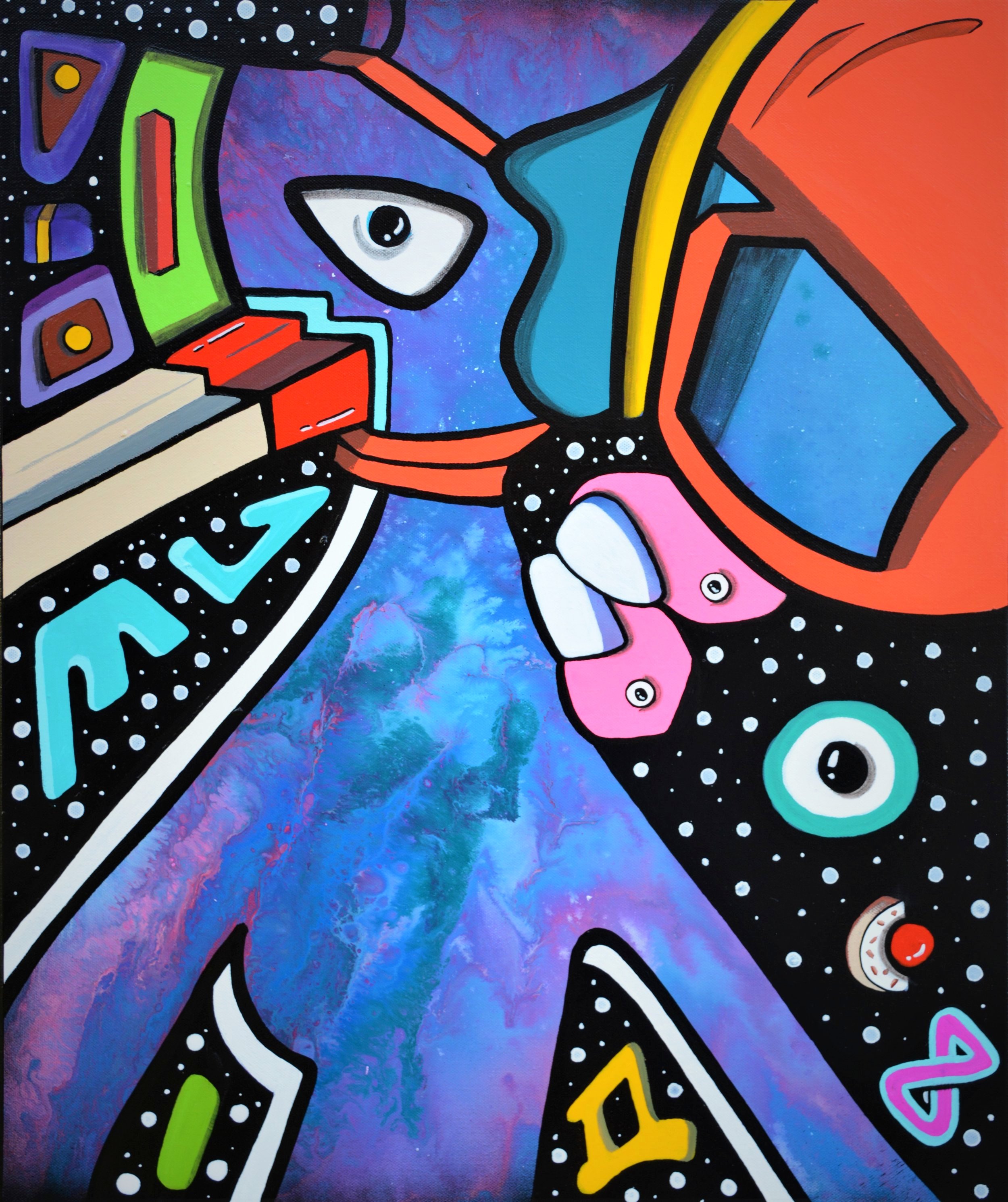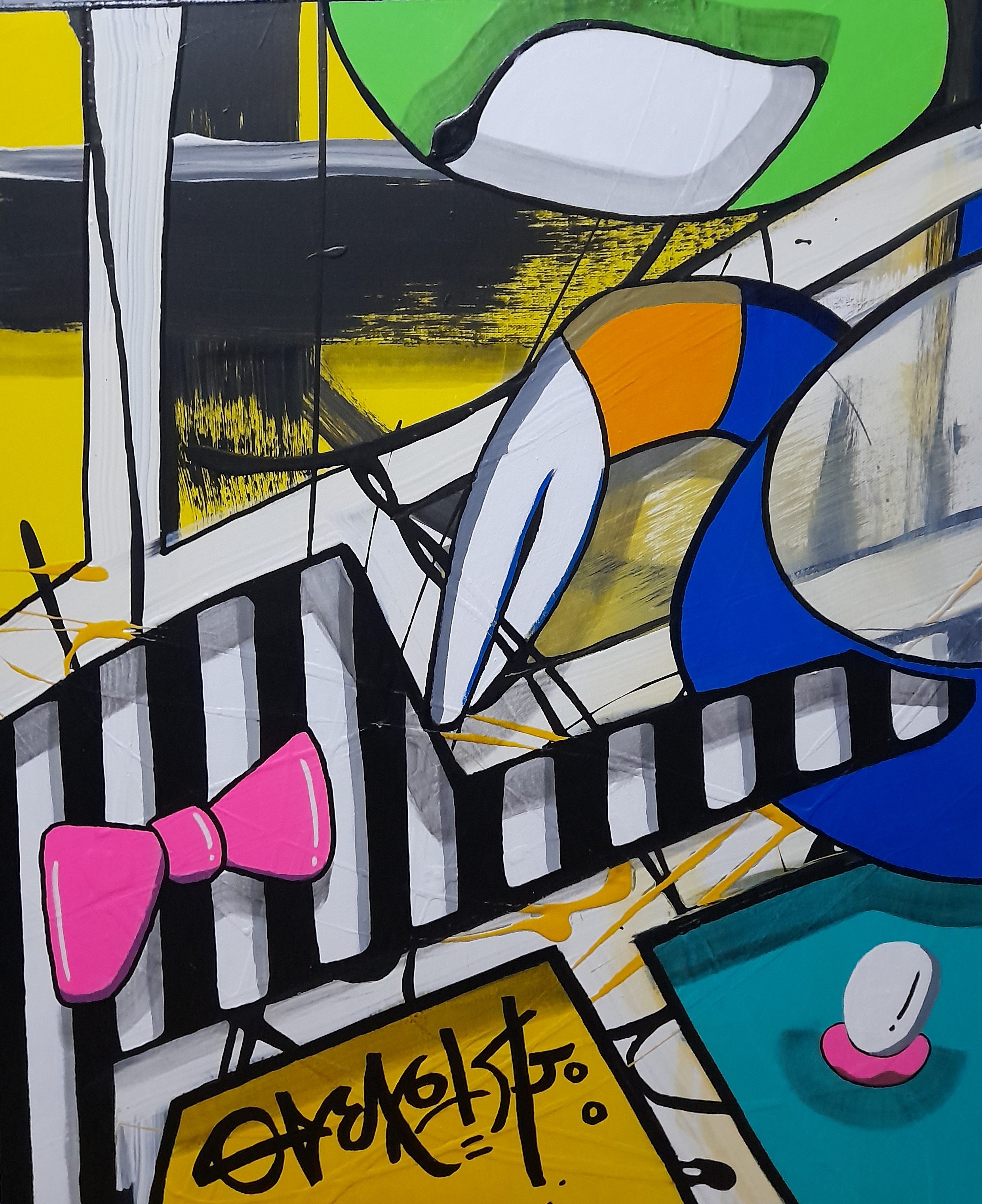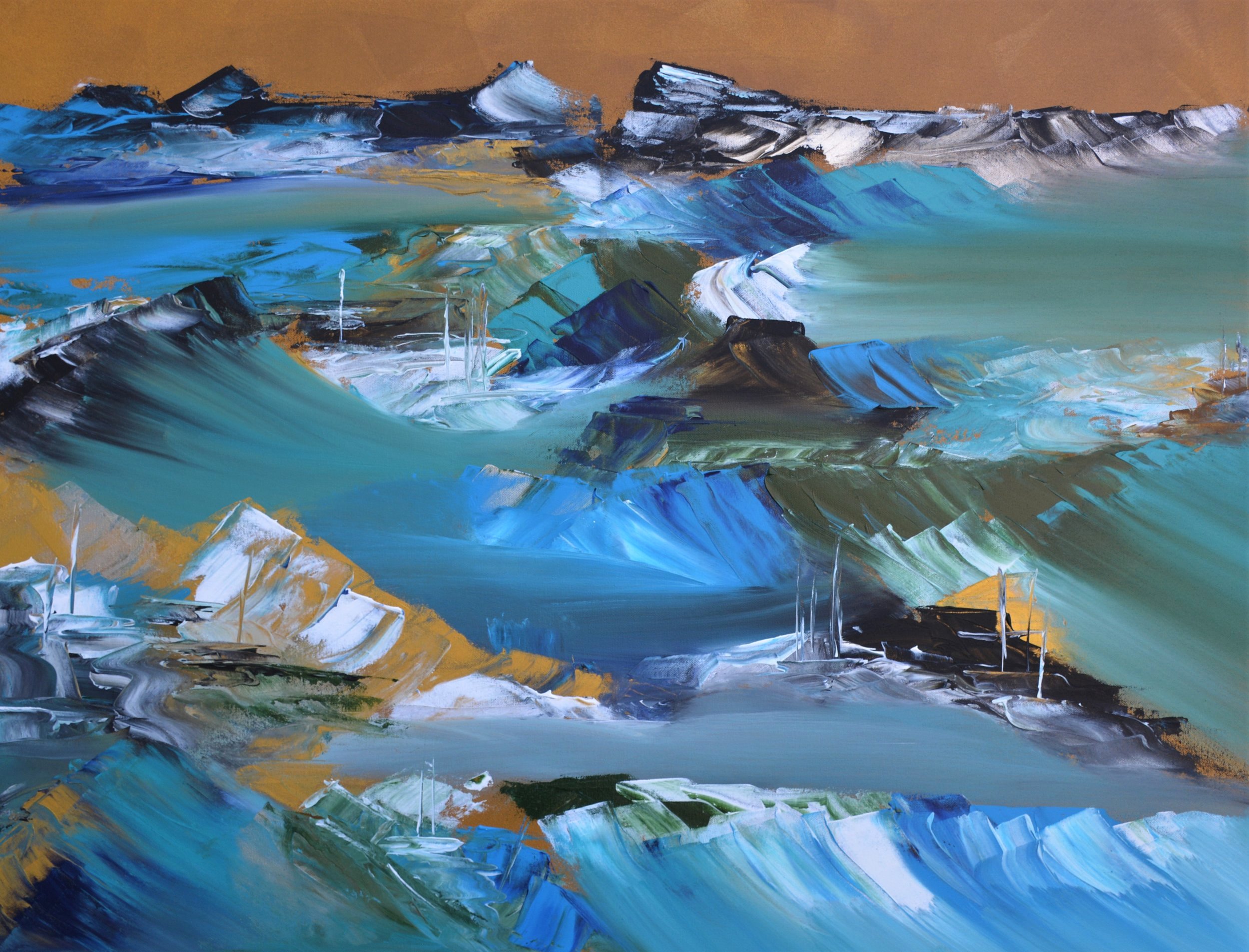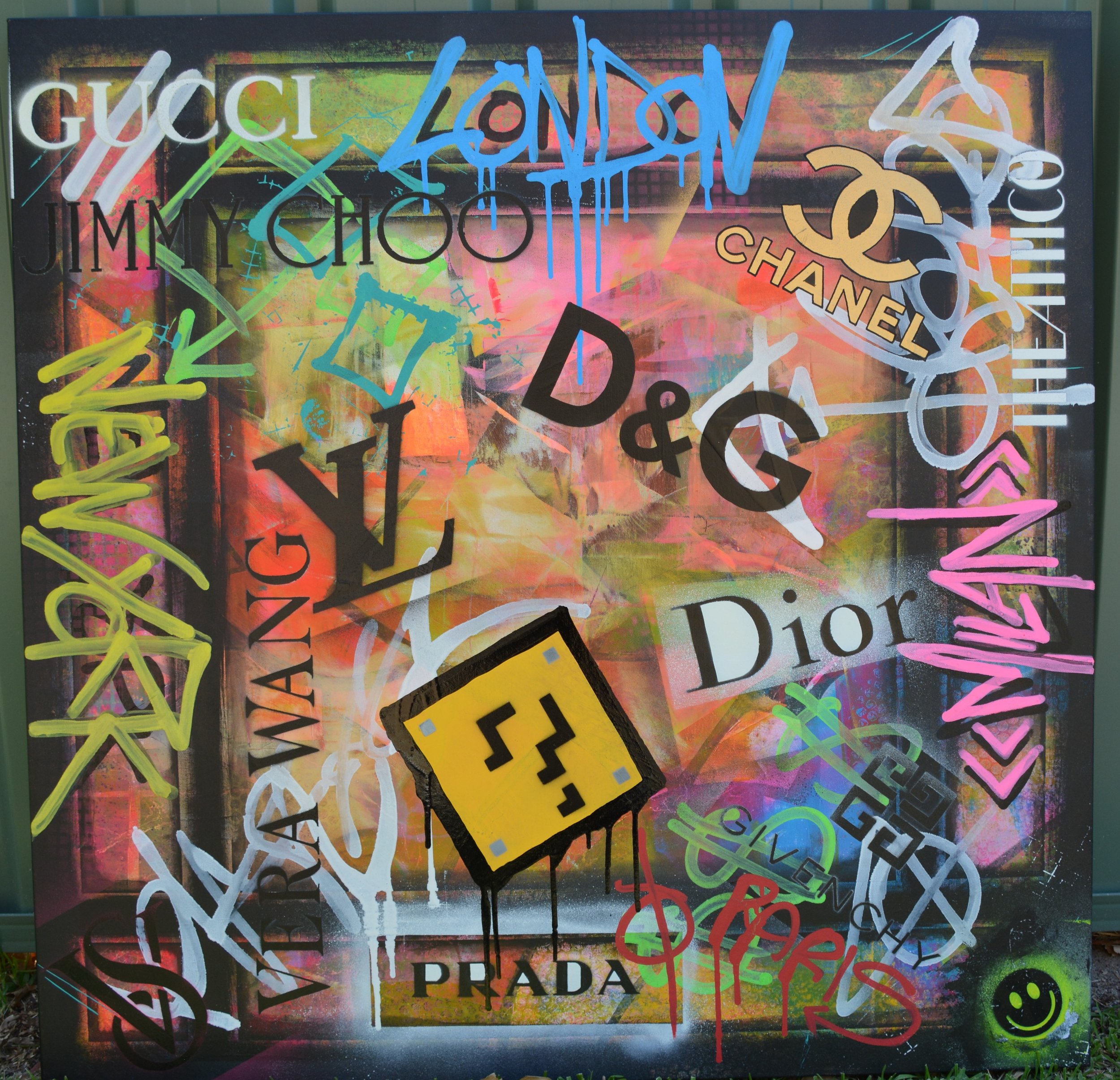Interview
Clayton Popa
Clayton is a self-taught artist, constantly learning new skills and styles. He finds that the best way to learn is through the invention of the self, discovering what works and what doesn’t.
Clayton has been painting for 15 years, and although he calls himself an abstract artist, he is not tied to just one style. He finds peace in experimenting with creative ideas and new mediums, including digital art. However, he finds himself mainly working with acrylics and spray paints.
Having a passion for writing poetry, Clayton enjoys writing about anything from authority to spiritual matters and common daily problems. As an empath and Starseed, he has the ability to connect to the spiritual side of the world, and integrates this into his works.
Clayton’s ambition in life is not to sell paintings for money or fame, but to find the soul of the art and be able to transmit this to the world. His passion is to change the way we see and experience art, to open up our minds to all possible imaginary solutions and perceptions that may be laying dormant.
What is your background and how did you start your journey in the art world?
“Ever since I was a child, I have been fascinated by the arts. I started drawing, creating and writing at a young age. I remember tracing the TV screen on The Simpson's just so that I could get a balance of the cartoons. I started with comics and sketches and eventually moved on to anything from tribal art to tattoo designs. I would look at other’s creativity and think to myself that I can do that, but better. As I got older, I told myself that one day I would take all those designs and put them on canvas to create paintings. In early 2010, when I got my first apartment, that's exactly what I did.
Since then, I have been evolving my artworks and creativity to find where my style fits best. Since I don’t like to be confined to one genre, I find myself creating more abstract designs rather than staying in one lane. I want to create pieces that include everything I have found or learnt along the way, and the journey never stops. I find myself ever evolving along a path to my true creativity, creating paintings that people haven’t seen before.”


What does your work aim to say? Does it comment on any current social or political issues?
“I have some pieces that reflect social issues or current times, but I typically tend to stay away from these topics. I want people to have a sense of wonder and enjoyment when they view my work, rather than debate the propaganda of the piece. This doesn’t mean that I won’t incorporate sociopolitical themes into my work, but I prefer to create art that allows the viewer to question the reality of what is going on.
Most of my art has hidden messages or out-of-this-world information, but the overall consensus is to allow the viewer to create whatever it is they want to see. Most of my pieces can be displayed at any rotation to offer a new perspective. I want my art to represent a new way of thinking—one where when you look at the piece, you have to search for the answers, either up close or at a distance. I want to change the way people view art, and inspire people to be more imaginative in their thoughts.”
"Wouldn’t we all like to be the next Da Vinci or Picasso and have a tutor? But who would we be then, if not just another understudy?
Through the trial and experimenting method, I create my own works, learning and developing the hard way.”
Which current art world trends are you following?
“I find that there’s a lot of current trends, from paint pouring to pendulum effects to NFT art, and in my opinion, some people are making a lot of money, but without the story, history and creativity they are exploiting the world of art.
I love to make designs that can be incorporated onto apparel and I often find myself liaising with people of all ages to assist them in their own creative pursuits to also showcase their talent. I love artists like Banksy or Trust Icon and other muralists and creative artists. They push the boundaries and intermix styles with political issues as well as old renaissance styles with modern edges. As an artist I do get inspiration from other artists' work, however, I try not to follow trends created by the world and instead create a unique vibe that is simply me. Whether the world understands it yet is simply a matter of time.”
Do you plan your work in advance, or is it improvisation?
“I plan many of my more intricate pieces. I don’t want to ruin them, so I prefer to make sure they look right the first time. However, for most of my abstract pieces, I tend to just go where my instinct takes me. I try to be brave in my work and trust the process. I may plan the colors I will use, but the overall outcome of the pieces are all instinctive. When I’m in the moment, I just go with it. I find that sometimes as abstract artists, we can overthink the outcome and be too harsh on ourselves because we are looking for that perfect piece. But I give myself room to make mistakes, either by accident or intentionally, and finding ways to resolve this is part of the fun.”
What process, materials and techniques do you use to create your artwork?
“Technology has made it a lot easier to draw and create on the tablet or phone. When I want to create a piece that requires more detail or shape building, I will use my phone, take a picture and draw out what I see first. This really helps me find that right balance. Then I will add my own ideas to the painting. By doing it this way, I don’t over commit to something. And I find that as the painting progresses, it will also change from the original concept.
For the artworks where I plan to just create and be free, I tend to use anything—paint scrapers, rollers, brushes, forks and other kitchen utensils. I find the best tools for painting are often the ones from other industries. I don’t really have any special technique. I watched artists like John Beckley to see how and what he used to create his pieces. It really did inspire a lot of my creativity. I buy pre-stretched canvas, as I have limited space and haven't yet the location to use rolled canvas. However, I’m working towards this as I want to be able to make larger pieces. I look at it as learning different styles and techniques, and then just scaling it up.
When creating my high flow acrylic designs or more intricate designs, I listen to sacred music, or to be honest, any type of music. I channel the energies from the music into the artworks. I love to listen to healing music when I create my landscape pieces, as the outcomes are translated from the soulfulness of the tones into the colors and designs. Then, I just let loose and follow my instincts.”
What does your art mean to you?
“Simply put, my art is my life. When I look over what I have created, it makes me smile. When I am able to help others unlock this about their art, it is at its most beneficial. I don’t look at art simply for making money, although I know it will for me. I see it as a way of expression—a way to express one’s feelings and showcase the things we cannot see or talk about. Art is therapy for the mind.
I always love it when someone doesn’t understand my artwork because it opens room for discussion as to why. I want my art to make people feel, not just look at it and know what it is. I want them to see the skill and judge it. I want them to go into their imagination and create what their mind wants. Art is storytelling. If you were to line up all my pieces in a row, you would understand my story, the transitions it has gone through, and the development of a new chapter. I want to change the way people look at art, away from the galleries or showcases, and more towards the belief that a piece of art can heal; that no matter which way you look at it, it can offer a new perspective.”
What’s your favorite artwork and why?
“I wouldn’t say I have a favorite piece of art, since artwork changes with time or the period that it belongs to. I have always loved works by M. C. Escher— the symmetry, symbolic nature, and complexity. I also love the freedom of works from Jackson Pollock and surrealist artists. However, I don’t believe we should set our sights on a favorite piece as it can limit us to a mold. We should love a piece for that moment or that reason. I love my own paintings and what they represent through me as the artist, and the story they have yet to tell.”
Have you had any noteworthy exhibitions you'd like to share?
“I have had two exhibitions to date, and they were a rewarding experience. They were not held at a gallery but in an open space. I look forward to showcasing my artworks on a more global or profitable scale. I have been to a few galleries to inquire but due to the nature of my pieces, I often find resistance from the traditional settings. This has not stopped my endeavor.
I have been lucky enough to have some media attention to help my progress, with Perth Voice showcasing an article about me and the pieces I showed in Northbridge, Australia. My work caught the attention of the West Australian. I have also received special merit and recognition for some of my pieces that were entered into the Light Space & Time online gallery, one being my abstract piece ‘Street Melody’. For the animals section, I entered my painting ‘Elephant’.
I have also held a solo exhibition in Leederville at Ink Remedy, where I had numerous positive feedback about the diversity of my art, and sold a few of my pieces.”








